Meet author Jayme H. Mansfield
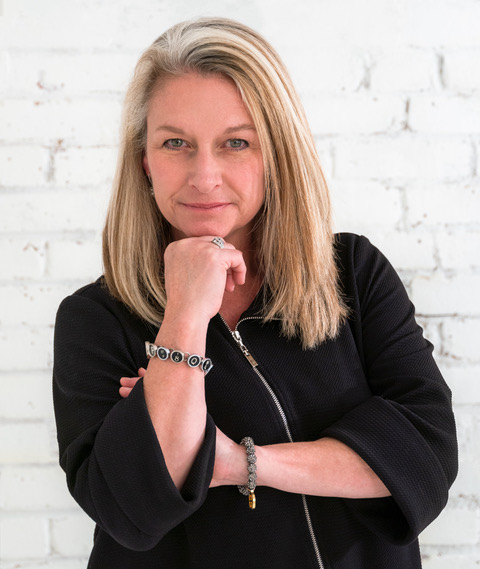
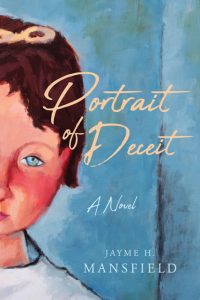 Loosening the reins and leaning into a creative life—that’s Jayme Mansfield’s sweet spot as an author, artist, and educator. Speaking at book clubs and interest groups, hosting writing and art retreats, and instructing others in their artistic pursuits is the icing on the cake. The transformative power of art and faith are common threads in her award-winning historical and contemporary novels, Chasing the Butterfly, RUSH, and Seasoned. Her new literary suspense, Portrait of Deceit, promises the same.
Loosening the reins and leaning into a creative life—that’s Jayme Mansfield’s sweet spot as an author, artist, and educator. Speaking at book clubs and interest groups, hosting writing and art retreats, and instructing others in their artistic pursuits is the icing on the cake. The transformative power of art and faith are common threads in her award-winning historical and contemporary novels, Chasing the Butterfly, RUSH, and Seasoned. Her new literary suspense, Portrait of Deceit, promises the same.
Tell us about your newest book.
When an anonymous collector approaches the Richard Museum in Washington, DC, with a possible Modigliani portrait, art authentication expert Olivia Danford is called in. Her talents investigating pieces for museums, universities, and private collectors provide a retreat from a past she’d rather forget. But the chemical analysis and mysterious provenance of The Girl in White reveal much more than what lies beneath the layers of paint. Olivia is drawn back into her past, where she must decide if a half-truth is still a whole lie . . . and if a lie eventually reveals the truth.
What inspired you to write Portrait of Deceit?
Portrait of Deceit was a patient story—steadily growing over the course of several years, nourished by a unique friendship with a shared love for art, sprinkled with story-related travel and solid research, and soaked with imagination. The story seed for Portrait of Deceit landed on fertile ground when I heard Dr. Colette Loll, founder of Art Fraud Insights, lecture in Colorado about art forgery. I listened to her share about notorious art forgers and her unique specialization to investigate, prevent, and educate about these prolific criminal entrepreneurs. I was captivated—so much that I introduced myself to Colette after the presentation, told her I was a fiction writer and was already composing a story in my head and suggested we could talk further. Two years later, with her business card coaxing me from my bulletin board next to my writing desk, I picked up the phone and called. The initial discussion confirmed that Colette is not only passionate about her work, but the crème de la crème in the world of art fraud . . . on the good side that is!
How would you describe this book to someone in a 30-second blurb?
Portrait of Deceit, a literary suspense, is an entanglement of truth and deceit. It is steeped in art history and the intriguing world of art forgery. It is literary in that the language is sensory and emotive—taking the reader on an intimate and introspective journey with the protagonist. It is suspenseful in that there is much at stake to decipher truth from lies, fact from fiction, and what really lies beneath the layers of the paint.
What genre do you focus on?
I write in a few different genres—historical, contemporary, and suspense. However, each book contains elements of art, faith, and history and are written with a literary flair. I am driven more by the story seed than a specific genre, although I’m enamored by characters of old and am a sucker for doing deep research whatever the topic may be.
Why do you write?
I am a storyteller at heart—always have been, even as a child (I had quite an imagination!). Now, as a fiction writer, I find myself writing to encourage others, decipher truth, and make sense of life’s hills and valleys. God continues to nudge (sometimes shove) me to write—with His guidance, I continue on.
Who is your main character, and how did you choose that name?
Olivia Danford is the main protagonist—intelligent, classy, driven, yet vulnerable and fragile. As crazy as it seems, she told me her name as I visualized her at our initial meeting.
What is your work schedule like when you’re writing a book?
I wish I could say I write each day, but I tend to write in long, focused sessions. When I am in the thick of completing a novel, I am all in—the characters, setting, the problems and resolutions are in the forefront of my mind.
What is the hardest part of being an author?
For me, the most difficult part is the consistent time to write all the stories that I want to tell. The good news is I’m at a juncture in my life where some big responsibilities are ending and I plan to shift more effort toward writing.
What’s the best part of your author’s life?
There is something extraordinary about creating story—it is both intrinsically invigorating and healing. God continually works on my heart, mind, and soul as stories evolve. He is my constant companion at my writing desk. Opportunities to share my books with readers, whether in small groups in the comfort of homes or presenting to large audiences, I am in my happy place! The friendships and comradery among book lovers are priceless!
What’s one unusual fact about you?
I have owned and taught art in my private studio for nearly 30 years. The majority of my paintings are big and bold floral abstracts that have earned the description of “being full of joy and hope.” That makes me smile!
Do you have other books? We’d love to know.
Chasing the Butterfly ~ A historical fiction set in Paris and Provence from 1928-1960.
RUSH – A historical fiction based on the true story of my great-great grandmother in the 1893 Oklahoma Land Rush
Seasoned – a tender love story about two octogenarians who accept another chance to love
What are you working on now?
The Lesson ~ A poignant, uplifting, and often humorous story of a group of retired teachers who learned more from each other about love, life, and friendship than could ever be taught in a textbook.
Website: www.jaymehmansfield.com
Link to book: (Susan – let me know when you post this. I should have the Amazon link soon.)
Social media links:
FB: https://www.facebook.com/JaymeHMansfieldAuthor/
IG: @jaymemansfield
Goodreads: https://www.goodreads.com/author/show/8432600.Jayme_H_Mansfield
Twitter: @JaymeMansfield
YouTube: https://www.youtube.com/channel/UCHog5qLSIkbF7ZtSEQaVaoQ
Thousand Island Park
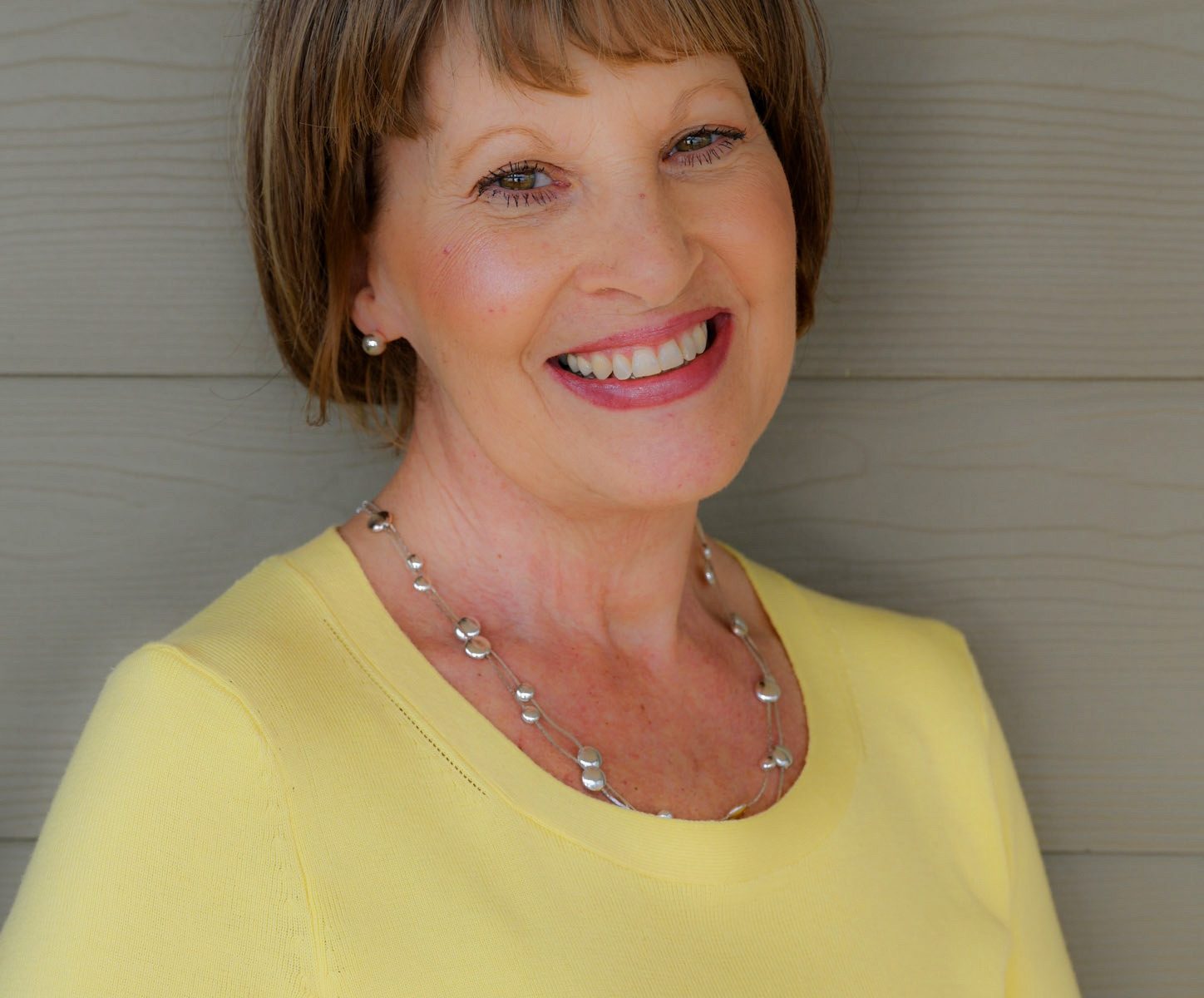
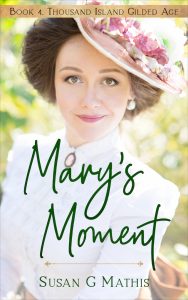 Thousand Island Park has been on my list of places to write about, and I’ve finally checked off this wonderful story in Mary’s Moment. Here’s a little about TI Park, the setting for this fiery novel.
Thousand Island Park has been on my list of places to write about, and I’ve finally checked off this wonderful story in Mary’s Moment. Here’s a little about TI Park, the setting for this fiery novel.
Tell us about Thousand Islands Park on Wellesley Island.
The Thousand Island Park Camp Meeting Association was founded by the Rev. John Ferdinand Dayan, in 1875, as a Methodist summer camp with regular meetings, sermons, and public services. They leased spots for tents or cottages and provided most of the conveniences of city living but without its vices. TI Park was called, “The Chautauqua of the North.”
In 1883, the Park moved away from the family-oriented camp and opened it to a more general public. But they still kept several of their rules like observing the Sabbath.
The Park continued to grow, so by 1894, nearly six hundred cottages plus hotels created a summer village that included a library, yacht club, golf course, roque courts, annual tennis tournaments, daily concerts, an art school, its own printer, a needlecraft shop, fishing guides and boats, a book shop, a photographer…and Sunday services.
By the turn of the century, in 1900, the Park had become a full summer community with a library and all the amenities a full-service resort would provide including insurance companies, printer, needlecraft shop, shoe store, hand-blown glass souvenirs, a china maker, hand laundress, hair and manicurist, Japanese bazaar, Persian and Turkish rugs, general store, meat market, milk, ice, plumber, contractors, barber, boat livery, fishing guides, tailor, Indian basket shop, candy store and more. Yet it still retained a tight-knit, small town warmth and vitality.
What kind of housing did TI Park have?
Besides hundreds of lovely Victorian cottages, the Columbian Hotel and the Wellesley Hotel (which still exists today), and smaller hotels made up of various cottages were open to the public. The smaller hotels such as the Geneva, the Pratt House, and the Rochester as well as boarding houses each had a separate function.
What happened in the summer of 1912?
In 1912, the summer population had grown to about 12,000. That summer, three major fires nearly destroyed the Park. In May, eleven boathouses and three launches were destroyed in a riverfront fire. In June, an entire block of new cottages burned down. The cottages were being rebuilt to replace cottages lost in a fire eight years prior. In July, the Great Fire destroyed a hundred homes, businesses and razed the Columbian Hotel. Though devastated, the Park quickly rebuilt.
What’s it like today?
Today, Thousand Island Park is still a lovely summer community full of gingerbread Victorians and friendly people. The community retains its homey, small town feel and offers lots of fun things to do. It’s a great place to visit in the summertime.
ABOUT MARY’S MOMENT:
Mathis’s attention to detail and rich history is classic Mathis, and no one does it better.—Margaret Brownley, N.Y. Times bestselling author
It’s the Summer 1912, and the Thousand Island Park’s switchboard operator Mary Flynn is christened the community heroine for her quick action that saves dozens of homes from a terrible fire. Less than a month later, when another disastrous fire rages through the Park, Mary loses her memory as she risks her life in a neighbor’s burning cottage. Will she remember the truth of who she is or be deceived by a treacherous scoundrel?
Widowed fireman George Flannigan is enamored by the brave raven-haired lass and takes every opportunity to connect with Mary. But he has hidden griefs of his own that cause him great heartache. When George can’t stop the destructive Columbian Hotel fire from eradicating more than a hundred businesses and homes, he is distraught. Yet George’s greater concern is Mary. Will she remember their budding relationship or be forever lost to him?
Readers of Christian historical romance will enjoy this exciting tale set in 1912 Thousand Island Park, NY.
Thousand Island Park’s Mary’s Moment is out!
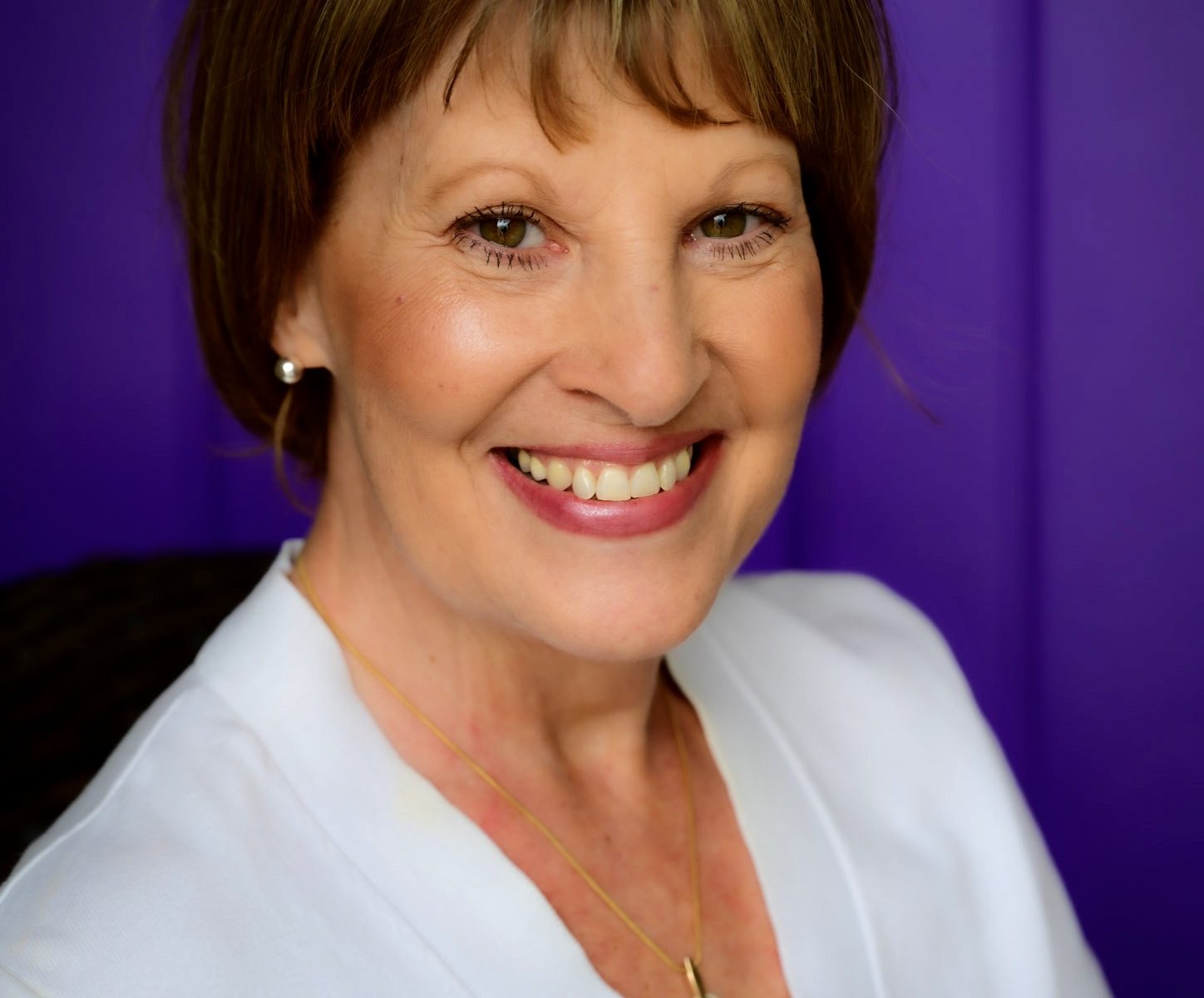
 My long awaited Thousand Island Park story is out! Here’s a little bit about my tenth and newest novel, Mary’s Moment:
My long awaited Thousand Island Park story is out! Here’s a little bit about my tenth and newest novel, Mary’s Moment:
It’s the Summer 1912, and Thousand Island Park’s switchboard operator Mary Flynn is christened the community heroine for her quick action that saves dozens of homes from a terrible fire. Less than a month later, when another disastrous fire rages through the Park, Mary loses her memory as she risks her life in a neighbor’s burning cottage. Will she remember the truth of who she is or be deceived by a treacherous scoundrel?
Widowed fireman George Flannigan is enamored by the brave raven-haired lass and takes every opportunity to connect with Mary. But he has hidden griefs of his own that cause him great heartache. When George can’t stop the destructive Columbian Hotel fire from eradicating more than a hundred businesses and homes, he is distraught. Yet George’s greater concern is Mary. Will she remember their budding relationship or be forever lost to him?
What inspired you to write Mary’s Moment?
My mother, Mary, inspired this story. When she was a young woman, she spent two summers serving her aunts in the Thousand Islands Park. Every summer she’d take me there for an ice cream at the Guzzle and tell me stories of her time in the Park. So, it was always my desire to write about it. When I began researching and discovered the tragedy of the three 1912 fires that nearly destroyed the Park, I had my story, especially because my mom nearly lost her father in a barn fire when she was just fourteen.
What kind of research did you do for Mary’s Moment?
My mother, Mary, inspired this story. When she was a young woman, she spent two summers serving her aunts in the Thousand Islands Park. Every summer she’d take me there for an ice cream at the Guzzle and tell me stories of her time in the Park. So it was always my desire to write about it. I began researching online, in books, and with interviews. By greatest resource, was the very thorough book, Thousand Island Park: One Hundred Years, and Then Some: a Centennial Year History by Jr. Helen P. Jacox and Eugene B. Kleinhans. In it, the authors detail first-hand accounts of the Park and fires. With these details, I wove a story that is visceral, interesting, and I think, memorable.
What message do you hope readers take away from Mary’s Moment?
All eleven of my Thousand Islands’ stories have hope as the central theme. Hope for a better future. Hope for love. Hope for healing. Mary’s Moment also focuses on healing broken hearts, forgiving those who hurt you, and embracing God’s redemption.
Does one of the main characters hold a special place in your heart?
I love Mary and George, lovingly based, just a bit, on my parents. My mom spent two summers at Thousand Island Park serving her two aunts, so she shared lots of stories of her time there. My characters become so real to me; they become friends. Smiles.
What were the key challenges you faced when writing this book?
Researching 1912 firefighting, telegraphy, and being a telephone switchboard operator was a challenging, fascinating, and in-depth study, but oh so much fun. I’m thankful I was able to connect with a fireman and a telegraphy/telephone historian who read my story for accuracy. I also had a historian with the Thousand Island Park Landmark Society read Mary’s Moment to make sure my details were correct. Though it’s extra work, it always helps to check with the experts.
Mathis’s attention to detail and rich history is classic Mathis, and no one does it better.—Margaret Brownley, N.Y. Times bestselling author
Readers of Christian historical romance will enjoy this exciting tale set in 1912 Thousand Island Park, NY.
Now available on Amazon and Ingram Spark.
Linda Wood Rondeau
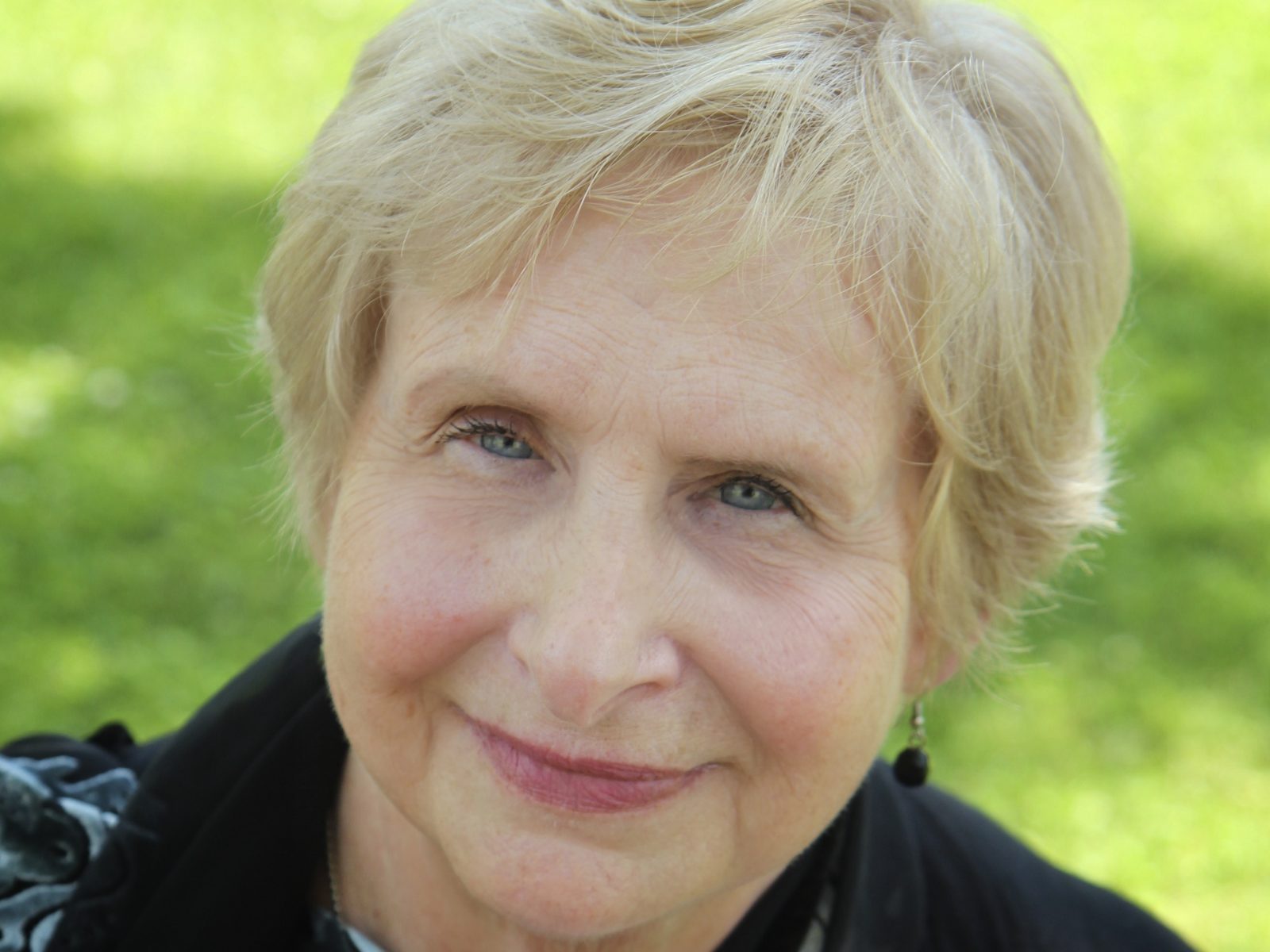
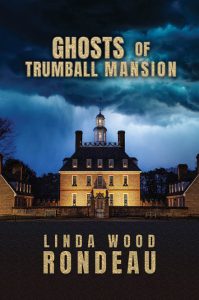 Award-winning author, Linda Wood Rondeau writes stories that grip the heart, inspired by her nearly thirty years of social work. When not writing or speaking, she enjoys the occasional round of golf, visiting museums, and taking walks with her best friend in life, her husband of forty-five years. The couple resides in Hagerstown, Maryland. Readers may learn more about the author, read her blog, or sign up for her newsletter by visiting www.lindarondeau.com.
Award-winning author, Linda Wood Rondeau writes stories that grip the heart, inspired by her nearly thirty years of social work. When not writing or speaking, she enjoys the occasional round of golf, visiting museums, and taking walks with her best friend in life, her husband of forty-five years. The couple resides in Hagerstown, Maryland. Readers may learn more about the author, read her blog, or sign up for her newsletter by visiting www.lindarondeau.com.
Tell us about your newest book.
Why do the ghosts attack only him? Or is Henry Fitzgibbons insane? Lana Longstreet is his star author … and the nom de plume of his estranged wife. Though he still loves her, how can he live in a home where ghosts attack him at every turn? Maybe the time has come to officially end any obligation to his wife’s Connecticut estate and be free from their torment.
Though she still loves her husband, Sylvia Fitzgibbons is tired of the charade of a marriage. She’d ask Henry for a divorce, but the children are planning an anniversary party in August, and she has a deadline for her Johnny Gallant suspense series in the same month. Then there are the decaying rose gardens, the only allure drawing Henry to the estate and her launch parties.
Henry agrees to help with the garden repair, but his hopes for a quick departure are smashed when Sylvia’s housekeeper is injured. Unable to resist her femme fatale wiles, Henry is trapped for the duration. But as the couple draw on each other for support, the malignant forces within the home become increasingly aggressive. Something evil conspires against them that only Faith can conquer. Will they survive?
What inspired you to write Ghosts of Trumball Mansion?
While I personally do not believe in ghosts as the world believes in ghosts, I do understand that there are forces beyond human sight around us. The Christian need not fear as God is our protector. As I pondered how a marriage can disintegrate through neglect, selfishness, and ambition, I thought of Henry and Sylvia. Sylvia’s impulsiveness to buy a supposedly haunted house in Connecticut put a strain on their marriage, though she believed the rumors to be false. Henry, however, encountered strange occurrences in the ballroom and his reports were ridiculed. Negativity and belittlement of one’s partner can destroy a marriage.
How would you describe this book to someone in a 30-second blurb?
Are the ghosts real or a figment of his imagination? A romance writer and her publisher husband, estranged for fifteen years, spend a summer together in their Connecticut estate, rumored to be haunted. When reconciliation seems possible, the disturbances within the ballroom, previously only observed by Henry, become more aggressive. Is there a malignant scheme to keep the couple apart?
What genre do you focus on?
Most of my writing is fiction. I love to tell stories that inspire, encourage, and teach about the power of God to turn our worst pasts into our best futures. As for subgenre in fiction, I write in various forms. I do write some nonfiction—devotionals or books to encourage a deeper relationship with the Lord.
Why do you write?
Writing is my creative outlet. I’ve been fortunate to have books published. I write in the hope to inspire and encourage. I write to let readers know there is a God who loves and has purpose for them. I also worship when I write.
Who is your main character, and how did you choose that name?
My two main characters are Sylvia (aka Lana Longstreet) and Henry Fitzgibbons. I chose Sylvia’s name as she is classy. She has a good sense of fashion and comes from an upper middle-class background. I chose Henry because, number one … I like Irish last names. Secondly, the name Henry makes me think of a latently strong man … but one who is unwilling to challenge what is. My Henry, though he loves Sylvia, is educated, and a man quieted by his past.
What is your work schedule like when you’re writing a book?
That’s a magic question. For me, one day is not like another. Married to a man who shoots from the hip and has no concrete plan from day to day, I have learned to plan with flexibility. I spend time in all the areas of importance: marketing, new writing, social media, learning, and mentoring to some degree each day. I will set goals, but I do not obsess on word count. I might set a goal of pages, finish chapter, rewrite chapter, listen on a read-aloud option, or other task depending on where I am in the manuscript. Since I’m retired, I am grateful for the flexibility to fulfil my passion and prioritize the people in my life who matter most.
What is the hardest part of being an author?
For me, I struggle with poor sales, though I do everything I can to market my books, hone my platform, and become more visible. Lately, I’ve been struck with the importance, however, of letting God take more control. The industry demands writer excellence in marketing. Yet the tasks and advice are based on world formulas. I’ve been praying for God to show me a different way … a way that glorifies him, not me. I find that marketing hurts my creativity. Failure to meet publisher expectations produces much doubt and feelings of letting God down. Sales are not the evidence of his presence in my work. I have had to learn to trust that he will orchestrate my efforts according to his plans … that the right words become visible to those whom he chooses.
What’s the best part of your author’s life?
There are many great aspects of my life as a writer. Of course, the best one is the privilege of using the talent God has given me to reach others. There are non-monetary benefits from writing such as a fellowship with other authors who greatly inspire me. This fellowship is like being in a large church of like-minded folks. There are opportunities for me to share what God has done for me. I also am grateful for the opportunities to mentor new and beginning authors.
What’s one unusual fact about you?
I went to the same high school as Richard Geer but never knew until I saw a biography of him on television. I checked my old yearbooks. I was two grades ahead so our paths did not cross much. I was in select choir, and he was in marching band. Then there was the time I didn’t recognize Michelle Obama when she entered the bookstore where I was doing a signing. I didn’t know it was her until after she left. Oh, the missed opportunities.
How have you changed or grown as a writer?
In addition to improving craft, I have become more patient and have learned to trust the long game of my writing career.
What is your favorite pastime?
I enjoy doing many things, but my favorite activity is playing golf with my husband. I love the focus and concentration the game requires. And of course, I love spending time with my man.
Do you have other books? We’d love to know.
At this time, all my available books are with Elk Lake Publishing and are listed there as well as with Amazon. In addition to Ghosts of Trumball Mansion, my recent books include: Wolf Mountain Legacy (An Adirondack Suspense), Hosea’s Heart, a contemporary general fiction with suspense elements, Who Put the Vinegar in the Salt (a nonfiction), and Selah-award finalist Miracle on Maple Street, a general fiction set in early 2000. I expect a release of my devotional book, Lessons Along the Way sometime soon.
What are you working on now?
In addition to the second and third volume of Lessons Along the Way, I am working on another Adirondack suspense, Shadows Along Silver Creek. Sent to live with relatives following the murder of his mother by his father, Edison James returns after twenty-two years to the smalltown of memory at the request of his dying sister. He meets and falls in love with a local girl. He is curious as to why so much property in the town is being sold to an unknown company. Edison’s ownership of the family cabin is in question, yet a realtor is suspiciously interested in the dilapidated property. As Edison begins to rebuild the cabin, he is beset by life-threatening occurrences including shadowy figures with seemingly malignant designs.
Website: www.lindarondeau.com
Link to book: https://www.amazon.com/Ghosts-Trumball-Mansion-Linda-Rondeau-ebook/dp/B09SH2LRSH/ or https://www.walmart.com/ip/Ghosts-of-Trumball-Mansion-Paperback-9781649495044/1634835899
Meet author Linda Shenton Matchett
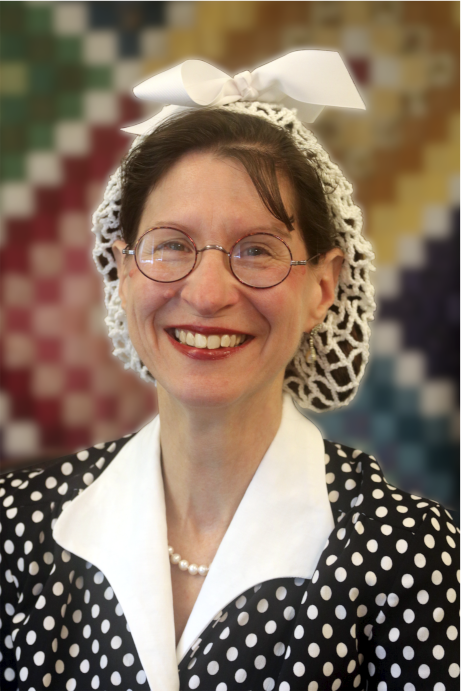
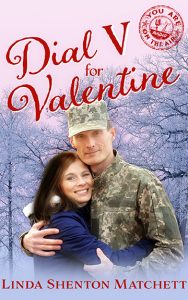
Linda Shenton Matchett writes about ordinary people who did extraordi
nary things in days gone by. A native of Baltimore, Maryland, she was born a stone’s throw from Fort McHenry (of Star-Spangled Banner fame) and has lived in historical places all her life. She now lives in central New Hampshire where she is a works as a Human Resources professional and is a volunteer docent and archivist at the Wright Museum of WWII.
Tell us about your newest book.
Being part of the military is not just a job for Fergus Rafferty, it’s a calling. He’s worked his way up the ranks and doing what he loves best: flying Apache helicopters. The only thing that will make his life complete is marrying Celeste. After he transfers to a unit scheduled to deploy in three months, he’s thrilled at the idea of marrying before he leaves so that they can start their new life. Except Celeste wants to wait until he returns. Can he convince her to wed before he leaves?
Celeste Hardwicke has just opened her law practice when she finally accepts Fergus’s marriage proposal. Not to worry. She has plenty of time to set a date, then plan the wedding. Until she doesn’t. But a quickie wedding isn’t what she has in mind. Besides, why get married when the groom will ship out after the ceremony? When she stumbles on her great-grandmother’s diary from World War II, she discovers the two of them share the same predicament. At an impasse, Celeste and Fergus agree to call into WDES’s program No Errin’ for Love. Will DJ Erin Orberg’s advice solve their dilemma or create a bigger divide? One they’ll both regret.
What inspired you to write Dial V for Valentine?
Last year, I helped curate an exhibit at the museum where I volunteer that included a wedding dress made from a parachute. I’ve also been archiving a lot of journals and diaries, mostly from servicemen and a few from the home front, so when I was asked to contribute to the series, those two things were still very much in my mind. Knowing I wanted to bring history into my story, I thought about handing down a wedding dress, then I wondered what might be in the bride’s diary. During WWII, many couples married before the groom shipped out, but just as many waited until after the war. I decided to explore that dilemma and realized I could set up the same situation in a contemporary setting so my protagonist’s situation would mirror that of her great-grandmother.
What genre do you focus on?
I love historical fiction. My two favorite eras to write about are WWII and post-Civil war. War is a pivotal event in history, no matter what era, and it greatly impacts the lives of people. Stories about how people act and react during these time periods intrigues me. To be honest, sometimes I think I was born in the wrong era.
Why do you write?
I’ve been writing stories since elementary school. My parents gave me a notepad and pens (probably to keep me out of trouble), and I fell in love with making up stories. I’m not sure what need inside me is fulfilled by writing, but it’s my happy place. I love the whole process from research to final product. Even if I was never published, I would write.
What is your work schedule like when you’re writing a book?
I work a full-time job, so my author life is very regimented. I’m always writing on a story. Monday through Friday, I’m at my computer by 5:30 AM and write until 7:00 when I need to get ready for work. I also write on Saturday mornings, but I start a little bit later. I work on blog posts, story outlines, and research a couple of nights a week.
What is the hardest part of being an author?
It’s difficult to juggle all the pieces of being an author with having a full-time job. The marketing aspect, which includes social media, is challenging and time consuming. Sometimes, I feel like I’m meeting myself in the middle.
What’s the best part of your author’s life?
Immersing myself in imaginary worlds. I love considering the “what if” and the places where my characters live their lives. Holding the finished product is always thrilling, too, especially seeing how the cover designer interprets my story.
What’s one unusual fact about you?
As I researched for my WWII mystery series, I took shooting lessons from a retired Army Captain.
What is your favorite pastime?
That depends on the season. During the summer, I kayak and try to get on the water every weekend. During the winter months, I love to snowshoe, but that’s weather dependent. As I write this, we’re getting the first good snow of the season, so with any luck, I’ll be on the trails tomorrow. Any time of year, I love to watch 1930s and 1940s movies, especially ones that feature William Powell.
What are you working on now?
I’m currently writing Dial S for Second Chances, my other contribution to the “You are on the Air” series, that will release in August 2023. It is also contemporary but reaches back to the 1970s because the story revolves around a class reunion. After that, I’ll be writing Beryl’s Bounty Hunter, a mail-order bride story set in the late 1870s. I’m also working on the outlines for two WWII stories that will go with my book Love at First Flight to create a trilogy.
Website: http://www.LindaShentonMatchett.com
Link to book: https://amzn.to/3J3ijSc
Social media links:
Facebook: http://www.facebook.com/LindaShentonMatchettAuthor
Pinterest: http://www.pinterest.com/lindasmatchett
YouTube: https://www.youtube.com/@lindamatchett
BookBub: https://www.bookbub.com/authors/linda-shenton-matchett
Goodreads: https://www.goodreads.com/author_linda_matchett
Meet author Becky VanVleet
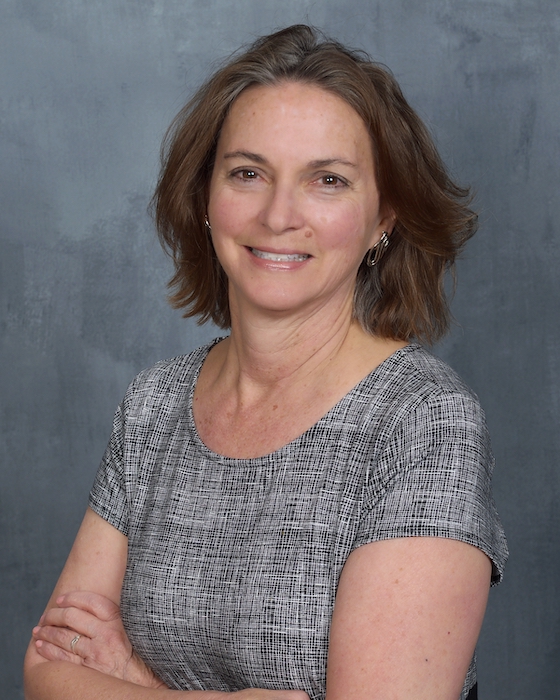
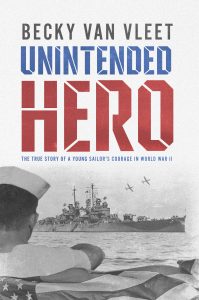 Becky Van Vleet is a retired teacher and principal and award-winning multi-genre author. She and her husband make their home close to Colorado Springs where she enjoys gardening, hiking, oil painting, power walking, and spending time with her family, especially reading books to her grandchildren. Becky has devoted her website to creating and preserving family memories and sharing family stories for the next generations through her blogs and newsletters. You can find her at: https://beckyvanvleet.com.
Becky Van Vleet is a retired teacher and principal and award-winning multi-genre author. She and her husband make their home close to Colorado Springs where she enjoys gardening, hiking, oil painting, power walking, and spending time with her family, especially reading books to her grandchildren. Becky has devoted her website to creating and preserving family memories and sharing family stories for the next generations through her blogs and newsletters. You can find her at: https://beckyvanvleet.com.
Tell us about your newest book.
Unintended Hero, my debut adult novel, was published in August 2022. And I’m still basking in the delight and joy of it all because I wrote this book to honor my father and all the other millions of Americans from the Greatest Generation who fought in WWII. My father’s story centers around his experiences, adventures, and battles aboard the USS Denver, a cruiser he spent three years on in the South Pacific.
What inspired you to write Unintended Hero?
In 1990 my father, Walter Troyan, and I sat down at my kitchen table while I recorded his WWII stories. He agreed to do this so that we could have the family history for the grandchildren when they studied about the war in school. I never dreamed that my two cassettes would turn into a book 30 years later! With the recordings, ship deck logs, taking two research trips, and researching the war in general, I was able to bring all the pieces together to formulate a complete story, one that other WWII buffs could also read and enjoy and appreciate the history. I have a QR code on my website of a four-minute snippet about the Empress Augusta Bay battle, covered in chapter 21, from my father’s original recording. I believe the Greatest Generation WWII stories can still speak to us today.
How would you describe this book to someone in a 30-second blurb?
Unintended Hero represents the Greatest Generation with an inspirational message of sacrifice, teamwork, and patriotism.
What genre do you focus on?
In truth, I’m a genre hopper. I have written children’s picture books, one adult novel, and I’m currently working on a devotional book. An editor friend asked me recently which genre did I like the best, where would I land. I didn’t even have an answer for her because so far, I’ve enjoyed all three genres.
Why do you write?
I write to preserve family stories. That’s what I’m passionate about. My published children’s books and adult novel are all inspired by true family stories. I believe family stories are inspirational and can be transforming, revealing our roots and culture.
What is your work schedule like when you’re writing a book?
I’m fortunate in that I’m retired, so I have plenty of flexibility in this season in my life. Every day is a little different for me. But I would say I mostly utilize the mornings for marketing and social media interactions, while my afternoons are devoted to a specific writing project.
What’s the best part of your author’s life?
I love it when I can share with friends or family members, actual or online acquaintances, about my writing and encourage them to think about preserving and sharing some of their own family stories.
What’s one thing your readers should know about you?
I have a small “tribe” following me around with this passion with my blogs, but I’d certainly love to grow my tribe. I believe it’s important for us to share our stories and pass down what we’ve learned in life to the next generation.
What is your favorite pastime?
I have several pastimes, but hands down, I would have to say spending time with my grandchildren, especially reading books to them.
Do you have other books? We’d love to know.
I have three children’s picture books from my “traveling series”. The titles are: Talitha, the Traveling Skirt, Harvey, the Traveling Harmonica, and Roxie, the Traveling Rocker. All three books are inspired by actual items in my family, traveling through three generations. Wally, the Traveling Watch is under contract for 2023 and Angelina, the Traveling Angel is coming soon.
What are you working on now?
I am currently working on a unique devotional book that I hope to have published in 2023. I was inspired to write this upon the discovery of a little red notebook I found in my mother’s purse upon her death–a notebook filled with wise sayings, Bible verses, quotes, musings, and practical everyday living advice.
Website: https://www.beckyvanvleet.com/
Link to book: https://amzn.to/3zYVqZX
Social media links:
Facebook: https://www.facebook.com/authorbeckyvanvleet/
Linkedin: https://www.linkedin.com/in/becky-van-vleet-ms-806055181/
Instagram: https://www.instagram.com/becky_van_vleet_author/
Pinterest: https://www.pinterest.com/beckyvanvleet/
Amazon Central Author Page: https://amzn.to/3INHIPB
